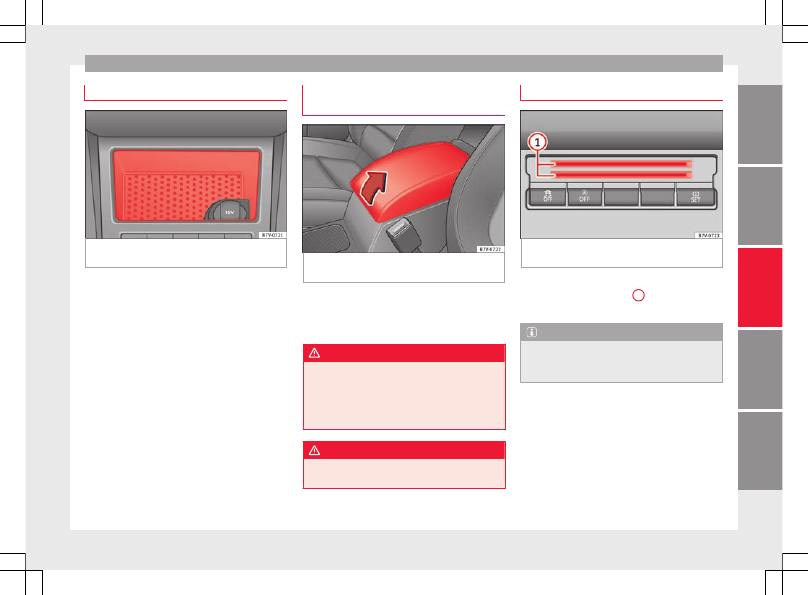Seat Alhambra. Instruction - part 11
-------------------------------------------------------------------------------------------------------------------------------------------------------------

Transport and practical equipment
Compartment on the centre console
Fig. 178
Compartment in the front centre con-
sole.
There is an open compartment on the centre
console
in which there may be a
12 volt power socket
.
Compartment in the front central arm-
rest
Fig. 179
Storage compartment in the front
central armrest.
To open, fully lift the central armrest in the di-
rection of the arrow
To close, lower the central armrest.
WARNING
The centre armrest may limit the freedom of
movement of the driver's arm and cause a se-
rious accident.
●
Keep the centre armrest compartments
closed while the vehicle is in motion.
WARNING
The centre armrest is not designed for chil-
dren to sit on!
Card compartment*
Fig. 180
Centre console, lower section: card
compartment
To the bottom of the centre console there is a
compartment
1
for coins, cards,
car park tickets and similar items.
Note
To avoid theft or use by others, do not use the
compartment to store credit or ATM cards or
similar.
165